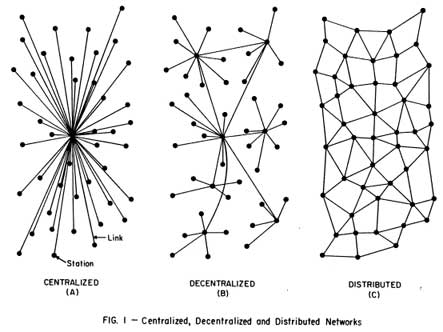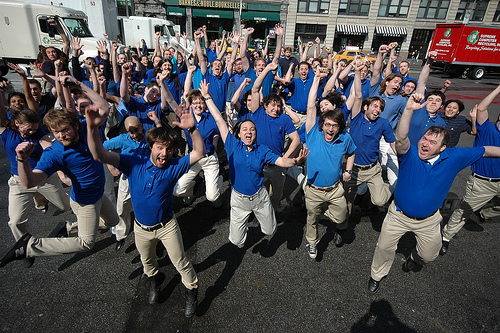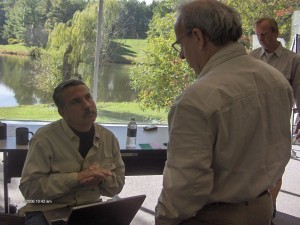Facilitating change: Four lessons from the devolution of the British roundabout
How do you facilitate change? In this occasional series, we explore various aspects of facilitating individual and group change.
The devolution of the British roundabout
I grew up in England, where roundabouts are more common than traffic lights as a way of routing traffic. (Fun fact: Hertfordshire, England, built the first roundabout in the world in the early 1900’s.) When I was a kid, roundabouts were walled constructions in the center of traffic circles. They looked like this:
In the 1960’s, the Brits realized that such elaborate constructions were overkill, and roundabouts became more like this:
As time went on, roundabout design was simplified further to this minimalist design:
These so-called mini-roundabouts were smaller than previous versions because they allowed the rear wheels of large vehicles to drive over the edge of the central circle when making tight turns.
While in London last year I saw the most recent evolution of the British roundabout. The physical barrier of the central island has completely disappeared, and the roundabout has just become a simple painted circle, with directional arrows painted on the road surface.
Four lessons we can learn about facilitating change from this brief history of roundabouts
When we are facilitating a desired change, we need to clearly communicate the change we want to make
Think about what would have happened if the initial replacement for the street intersections that human cultures have used for thousands of years was a plain white circle. People would not have understood how it was supposed to function. Without a physical barrier forcing a circular route, drivers would have been tempted to drive straight across it. The first roundabout design had to impose a fundamentally different way of navigating intersections; otherwise, it wouldn’t have worked.
It’s easier to facilitate change in small increments than in large leaps
By the time of the plain white circle roundabout, the concept of driving around, rather than through, circular objects placed at the center of intersections was imprinted on the British drivers’ psyche. The final design is quite different from the elaborate early roundabouts, but it developed through a series of incremental design refinements.
Change is attractive if the new situation has advantages
Each change in the design of the British roundabout created advantages for the builders (less expensive), environment (less space wasted at intersections), and users (more space to negotiate the intersection). While the promise of an improved outcome does not guarantee that a change will occur, it certainly can’t hurt.
Different cultures can have very different approaches to change
If you’re not British, your experience of roundabouts will be different; you may not even know what a roundabout is! In the United States, roundabouts only started appearing in the 1990’s (rotaries and traffic circles employ different rules). Other European countries have their own roundabout designs and unique histories of introduction. Don’t assume that a change that has worked for one culture will be acceptable to another. (A corollary to this lesson is that exploring other cultures is a wonderful way to have your eyes opened to aspects of your culture that you take for granted.)
Are there other lessons we can learn from the British roundabout? What other design evolutions can you think of that teach lessons about facilitating change?


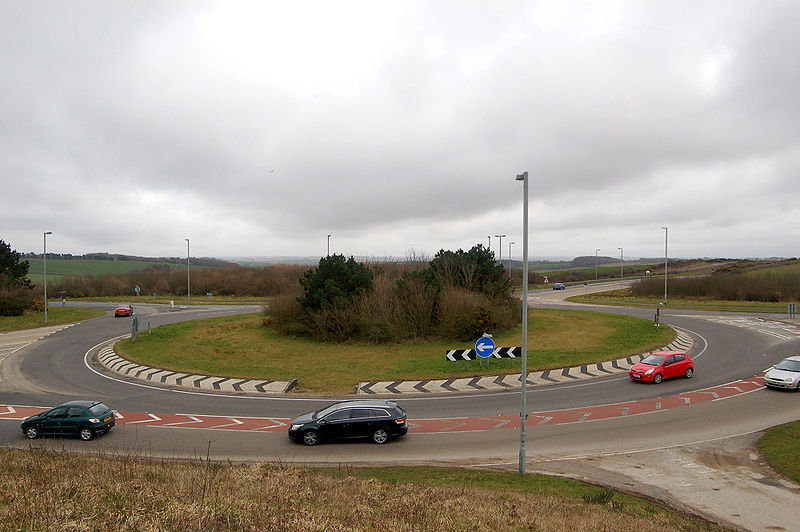
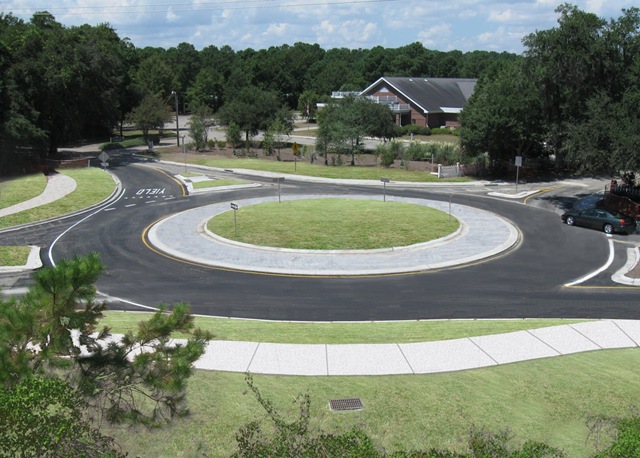
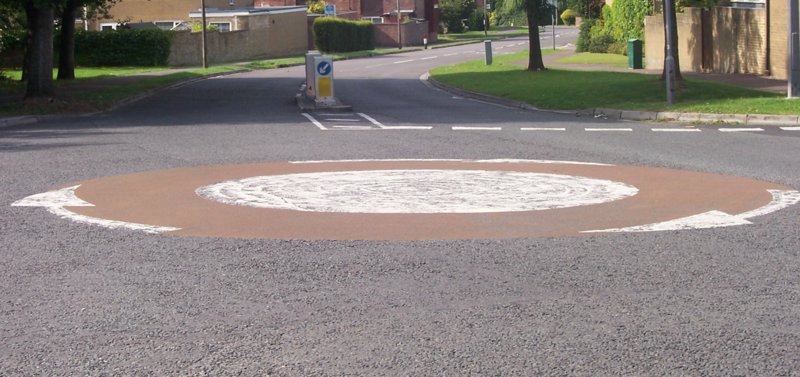
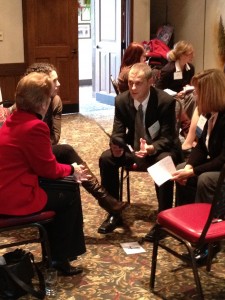 The peer conferences I run are extremely effective at catalyzing change, both in the people who participate in them and the organizations that run them. Why is this?
The peer conferences I run are extremely effective at catalyzing change, both in the people who participate in them and the organizations that run them. Why is this?